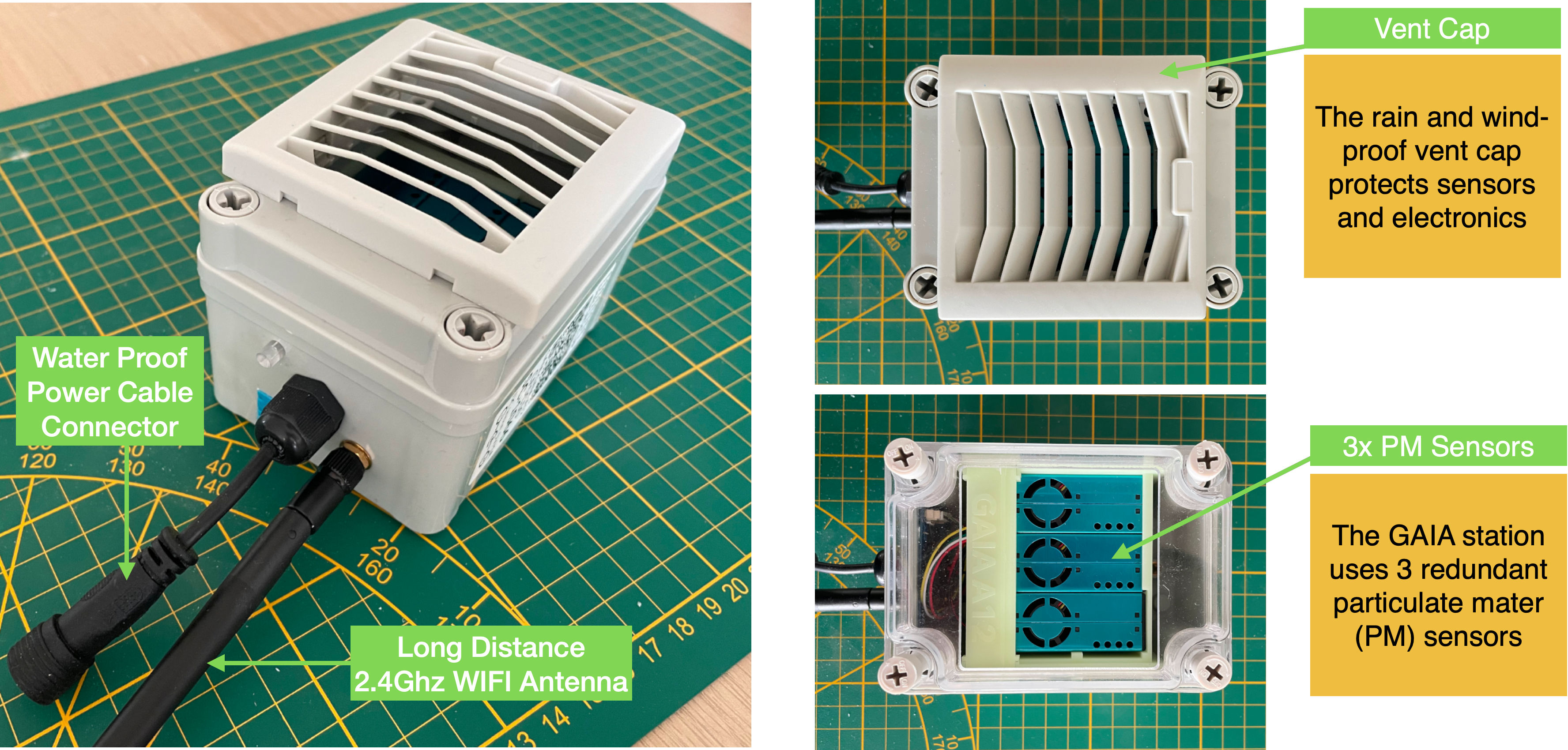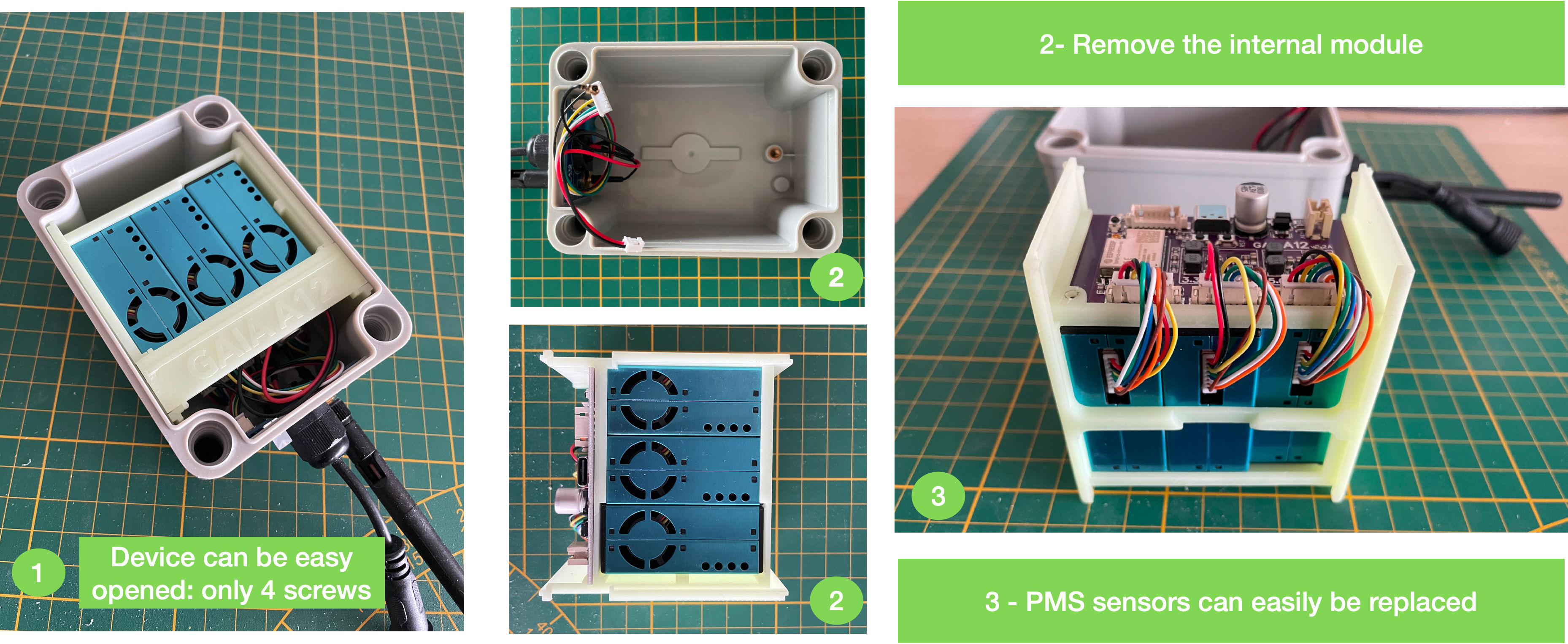Here are a few design internals insights for the GAIA A12 monitoring stations:
Gaia's external mechanical enclosure is specially designed, with a vent cap, which protects the sensors from direct wind and rain. The enclosure is made of UV-proof ABS plastic.

GAIA A12 external mechanical design
The GAIA station is very easy to be maintained - specifically, changing the internal sensor can be done by anyone - you just need a standard screwdriver.

GAIA A12 internal design:
Gaia uses 3 redundant dust sensors: The reason for using 3 redundant sensors is that, when one sensor fails, it is possible to know which one.
For stations with only two sensors, when a sensor fails, it is not possible to know which sensor is reporting correct data vs incorrect data.
The GAIA station uses a 25% duty cycle for dust sensors (active 90 seconds every 6 minutes). This makes it possible to operate the GAIA station for several years without the need for maintenance.
For each sample interval (1 minute), GAIA provides the minimum, maximum, standard deviation, average and median for for interval. All this information is needed to extract reliable information about the sensor data quality.
Gaia station costs $200, and for this price, you get a 2x5 meters waterproof power cable and a power supply.
GAIA A12 Items included for $200 USD:

1: 2x5 meters water proof DC5.5 power cable
3: External WiFi antenna
4: 5V/1A USB Power Supply
5: USB <-> DC5.5 Power Cable
6: Mouting adhesive
7: Mouting strips
Ordering and Inquiry
Fill in the form below to get a quotation including the shipment cost.
Frequently Asked Questions:
- Payment: It can be done using any regular credit card.
- Discount: 10% discount when ordering 5 pieces, 20% when ordering 10 pieces or more.
- DC Adapter: Products are shipped with localized power plug adaptors (USB power supply) for US, EU, AU and UK.
--
